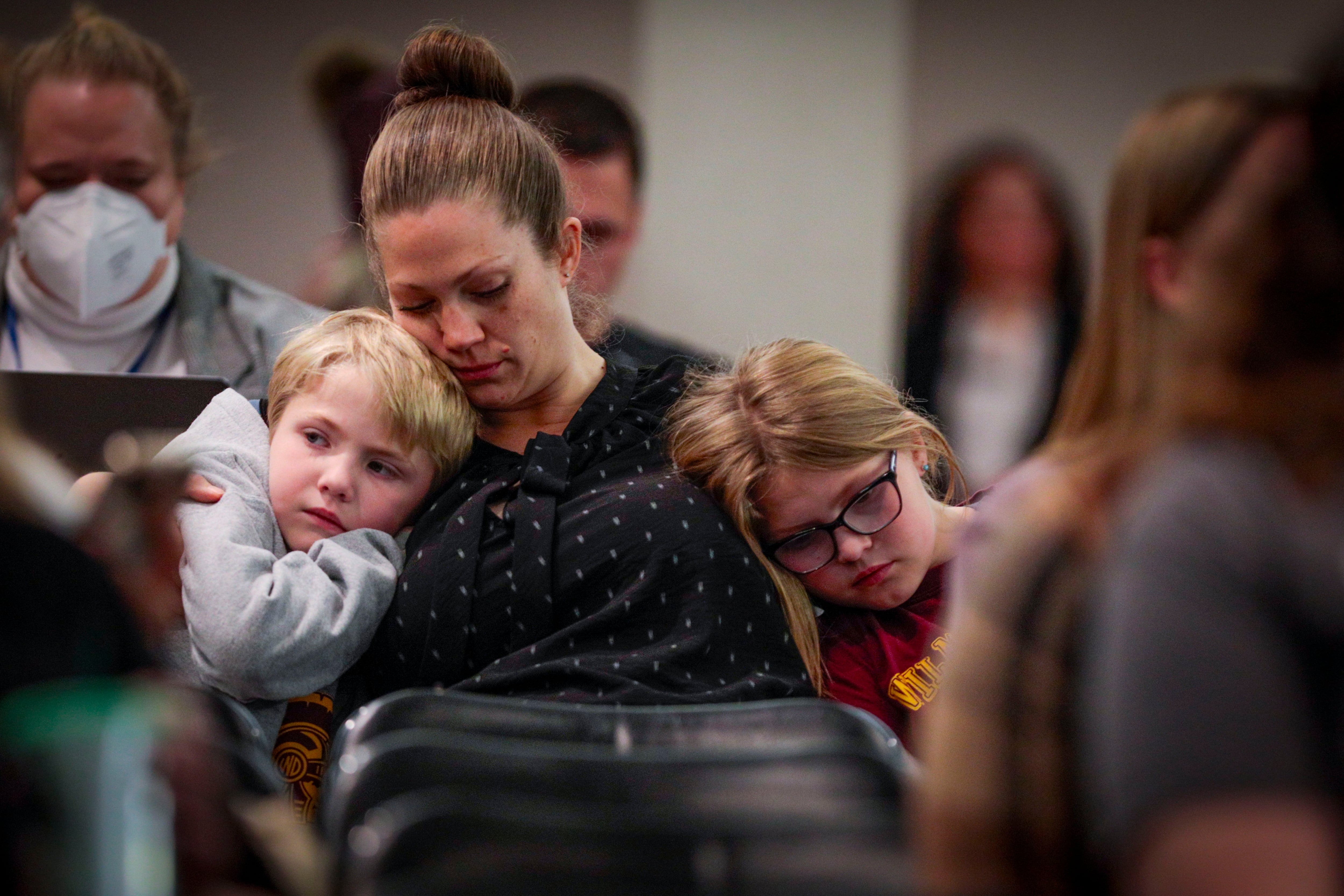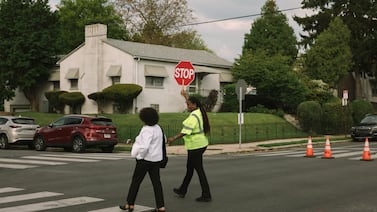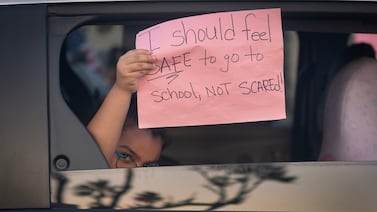Chalkbeat is a nonprofit news organization covering public education in communities across America. Sign up for Chalkbeat Colorado’s free daily newsletter to keep up with education news from Denver and around the state.
Jeffco Public Schools is laying out a roadmap for the next phase of school closures and consolidation in anticipation of fewer students enrolling next year and for several years to come.
Recommendations for middle school closures could come as soon as August under a resolution the school board is expected to approve this week. The resolution would put a moratorium on any high school closures while the district works on other plans around the future of high school.
Jeffco is planning to take a more comprehensive look over the next year at enrollment patterns, school boundaries, and feeder zones, as it considers which schools to close and where to consolidate. The resolution also lays out unsustainable enrollment as a factor for middle school closures, as well as one new factor: the accountability clock.
Being on the state’s accountability clock — the name for when schools have recorded low state ratings for many years in a row — could lead to a school closure. The state gives schools limited time to improve academic performance before it steps in and can order a plan for improvement, which can include turning a school into a charter school or closing it.
Until now, academic performance has not been part of the school closure conversation in Jeffco.
In Jeffco, Arvada K-8 is the only school close to reaching the end of the clock. The school had reached its fourth year of consecutive low ratings before the pandemic caused the state to pause testing and ratings. In the most recent rating, Arvada K-8 improved, but the school needs two years in a row of improved ratings to be off the clock.
If the next rating this fall is again low, that would be treated as the fifth year of low ratings and trigger state action. But often hearings are held in the spring after ratings are finalized and after the state has a chance to send in an independent panel of experts to evaluate the school and make a recommendation on next steps.
The district has already told the school that if the ratings this fall don’t improve, the district will ask the state to close the school, moving up the decision from the spring of 2024 to this fall.
Lisa Relou, Jeffco’s chief of strategy and communications who is overseeing the plan, said waiting for the State Board to take action in the spring would be too late for families trying to make decisions about where to send their children to school the next year and for staff who need to find other jobs.
“So, we’re not going to take our chances,” Relou said.
And while the school could earn a higher rating based on state tests from this spring, Relou said Arvada K-8 also has low enrollment and a complicated feeder pattern, which are also factors that may end up putting the school on a closure list anyway.
Arvada K-8 has a capacity for 920 students, but only has 554 students this school year, about the same as last year. The school, which is expected to continue to see declining enrollment in the coming years, is also listed as having a 62% choice out rate, meaning many more students in the school boundary leave to attend other schools, compared to the average rate of 42% at other schools.
Schools with low academic performance won’t automatically be considered for closure, Relou said, only those that are near the end of the accountability clock.
District expects to consolidate resources and improve school budgets
The pandemic has accelerated previously declining enrollment in Jeffco, as in other metro area districts in the state and other large districts across the country. In November, the school board voted to approve a plan to close 16 elementary schools at the end of the school year.
The enrollment declines have been most stark in elementary schools where lower birth rates have contributed to smaller kindergarten classes. As those classes move up, the lower student counts will reach secondary schools as well.
By closing schools, the district expects to save money and be able to consolidate resources in fewer schools. But as the district also works on smoothing out the transition for families displaced by the closures, it is spending more than $32 million in one-time expenditures to update buildings that will receive displaced students. School board members were initially shocked by those price tags, which were presented after the closure vote.
At the middle school level, Relou said the public can expect fewer school closures than there were at the elementary level.
“With elementaries, there were so many, and so many close together, but when you look at middle schools, it gets more complicated,” Relou said.
One school consolidation plan under consideration was developed by school principals. They are proposing that Pomona High School be turned into a school serving sixth through 12th grade and that Moore Middle School’s building be closed, with the students moving into the space at Pomona. Principals say they believe consolidating their resources and aligning the experience of students from middle grades into high school can allow for better outcomes.
The plan requires some building upgrades to allow for separate entrances for younger students and for older students, and to accommodate a part of the building to be a wing specifically for the sixth and seventh graders. A cost estimate of those changes is expected next month, ahead of a board vote on the plan June 22. The changes would take effect for the 2024-25 school year.
The district also is emphasizing collaboration with municipalities in the county. In November, some of the opposition against the elementary school closures came from city council members who felt that their plans for developing communities hadn’t been considered. This time, the board resolution directs the district to work with municipalities.
Relou said the governments and the school district need to be on the same page as they plan for the future of the communities and look at how more children in the area might be attracted to stay in Jeffco schools.
At the same time, as the district is looking at which criteria it will ultimately use to pick which schools to close, it has also commissioned a study of the school boundaries and feeder patterns in the district.
Relou has told the school board some of the feeder patterns are unusual. For instance, some K-8 schools have neighboring elementary schools that feed into their middle school or sometimes into seventh grade, creating a disproportion among grade level sizes. Some regions have multiple middle schools while others have only one.
The boundary study may also result in recommendations that could change the patterns of where students go from elementary to middle and high school. Sometimes, district leaders said, students don’t follow the district’s feeder patterns, and instead use the school choice process to go to other schools. The boundary study will try to make out whether other patterns make more sense.
At the high school level, the district is working on the “High School Reimagined” initiative, which includes work funded by state grants that aims to create partnerships between industry, higher ed, and school districts to increase the offerings of career and technical opportunities. Before the district considers school closures at that level, leaders want time to consider how extra space in high schools might be used toward those new learning opportunities.
Correction: May 10, 2023: This story has been updated to reflect that Moore Middle School would close and consolidate with Pomona High School under one proposal. An earlier version referred to Moore as an elementary school.
Yesenia Robles is a reporter for Chalkbeat Colorado covering K-12 school districts and multilingual education. Contact Yesenia at yrobles@chalkbeat.org.






